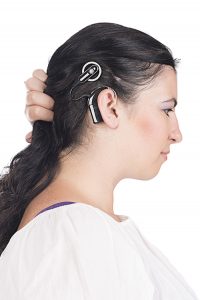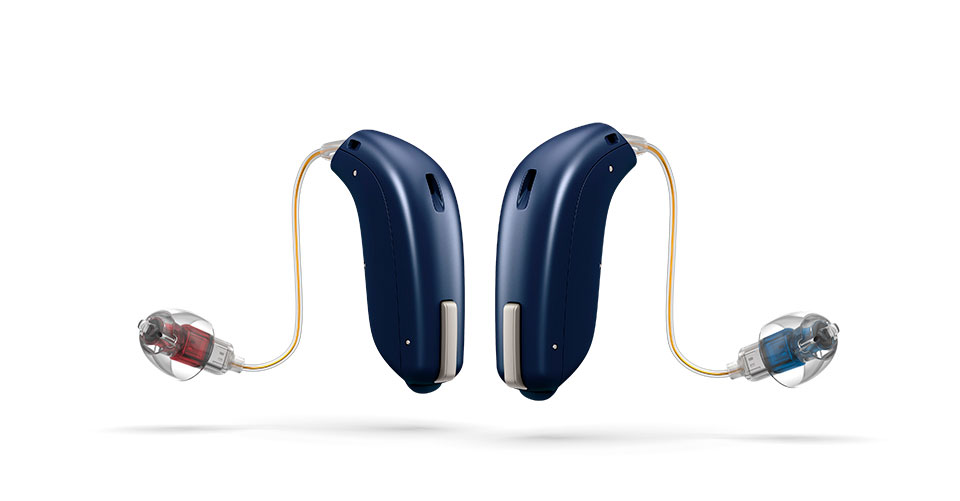 The most common form of vertigo is benign positional vertigo (BPV). BPV is a sensation similar to spinning and can be triggered by tilting your head up or down, turning over, lying down or getting up. If you have BPV, you may experience brief episodes of dizziness.
The most common form of vertigo is benign positional vertigo (BPV). BPV is a sensation similar to spinning and can be triggered by tilting your head up or down, turning over, lying down or getting up. If you have BPV, you may experience brief episodes of dizziness.
BPV is caused by disturbances of the vestibular system in the inner ear. Within the vestibular system are semicircular canals that contain fluid. The fluid moves against sensory receptors that tell your brain when your head is making rotational movements. BPV occurs when crystals of calcium carbonate clog the semicircular canals because the vestibular system then sends mixed messages to the brain about the body’s position.
Although the most common symptom of BPV is dizziness or a “spinning” sensation, other symptoms include vomiting, blurred vision, nausea, lightheadedness and loss of balance. Generally, symptoms last less than a minute, but sometimes the symptoms can come and go. Abnormal eye movements called nystagmus can also accompany BPV.
BPV is diagnosed by a test called the Dix-Hallpike maneuver where your head is held in a certain position while you lie down quickly. Eye movements are monitored and you are asked to describe your symptoms. The doctor may also complete a physical exam and collect a medical history.
There are several treatment options for BPV. One option is called the Epley maneuver, which is often said to be the most effective treatment option. The Epley maneuver involves moving in a way that dislodges the calcium carbonate crystals from the inner ear. Certain medications may also be used to relieve the sensation of spinning such as sedative-hypnotics, anticholinergics and antihistamines. Home treatments such as sitting down when you feel dizzy, avoiding triggering behaviors and being aware of your surroundings can help prevent injury.

 A bone-anchored hearing device is a special type of implanted hearing aid that works by transmitting soundwaves directly through the skull rather than through the ear. The bone-anchored hearing device consists of three parts: a titanium fixture, an abutment and an external sound processor. The fixture is surgically implanted into the bone behind the ear so that only the titanium abutment is visible. The sound processor, which “catches” the vibrations of sound waves, transfers the waves through the abutment into the bone and then to the inner ear. It allows the user to still hear sounds naturally, similar to how one hears their own voice.
A bone-anchored hearing device is a special type of implanted hearing aid that works by transmitting soundwaves directly through the skull rather than through the ear. The bone-anchored hearing device consists of three parts: a titanium fixture, an abutment and an external sound processor. The fixture is surgically implanted into the bone behind the ear so that only the titanium abutment is visible. The sound processor, which “catches” the vibrations of sound waves, transfers the waves through the abutment into the bone and then to the inner ear. It allows the user to still hear sounds naturally, similar to how one hears their own voice.  Traveling can cause stress for those with hearing loss. There are certain measures you can take to ensure your hearing aids are safe and your traveling experience is stress-free. Here is a list of tips for traveling with hearing aids:
Traveling can cause stress for those with hearing loss. There are certain measures you can take to ensure your hearing aids are safe and your traveling experience is stress-free. Here is a list of tips for traveling with hearing aids:  Our goal is for you to obtain the most benefit at the lowest price. We provide a wide variety of aids that range in price from $1000 to $3000 per ear. A three-year manufacturer’s warranty is included in the cost of the aid(s). Hearing aids come with a 30-day trial. When hearing aids are ordered you will be asked to pay a $100-per-aid nonrefundable deposit; the balance is due when the aids are fit and distributed. If at the end of 30 days you wish to return your hearing aids, you will be reimbursed the cost of the aids minus the deposit. If insurance benefits can be verified, we will bill your insurance for any portion they may cover of the total cost of amplification. For more information, please contact one of our expert audiologists.
Our goal is for you to obtain the most benefit at the lowest price. We provide a wide variety of aids that range in price from $1000 to $3000 per ear. A three-year manufacturer’s warranty is included in the cost of the aid(s). Hearing aids come with a 30-day trial. When hearing aids are ordered you will be asked to pay a $100-per-aid nonrefundable deposit; the balance is due when the aids are fit and distributed. If at the end of 30 days you wish to return your hearing aids, you will be reimbursed the cost of the aids minus the deposit. If insurance benefits can be verified, we will bill your insurance for any portion they may cover of the total cost of amplification. For more information, please contact one of our expert audiologists.  On average, batteries last 5-7 days depending on the size and style of your hearing aids, your degree of hearing loss, the amount of time your hearing aids are used and your listening environment. Obviously if there is no sound coming through your hearing aids, your first suspicion should be a dead battery. Other signs include sound that is distorted or unclear and unusually low volume levels. Some hearing aids are designed to produce an audible tone warning you when batteries are low.
On average, batteries last 5-7 days depending on the size and style of your hearing aids, your degree of hearing loss, the amount of time your hearing aids are used and your listening environment. Obviously if there is no sound coming through your hearing aids, your first suspicion should be a dead battery. Other signs include sound that is distorted or unclear and unusually low volume levels. Some hearing aids are designed to produce an audible tone warning you when batteries are low.  Though small, hearing aids are packed with high-level technology to help your ears and brain process sounds. As such, there are several practices that will help you care for the technology so that it will last. To prevent problems with your hearing aids, follow this list of practices to help preserve the device’s technology.
Though small, hearing aids are packed with high-level technology to help your ears and brain process sounds. As such, there are several practices that will help you care for the technology so that it will last. To prevent problems with your hearing aids, follow this list of practices to help preserve the device’s technology.  Hearing aids aren’t just available in a wide range of sizes and styles; they can also accommodate a variety of accessories. Deciding which, if any, will benefit you can be tricky. You may want to speak with an audiologist to learn more about any particular product.
Hearing aids aren’t just available in a wide range of sizes and styles; they can also accommodate a variety of accessories. Deciding which, if any, will benefit you can be tricky. You may want to speak with an audiologist to learn more about any particular product.  Completely-in-canal (CIC) or mini-CIC are devices that are molded to fit completely inside your ear canal. They are the smallest, least visible models of hearing aid. The CIC does not include directional microphones, which makes the device less likely to pick up wind noise, but also means the device is less effective for those with severe hearing loss. Additionally, the batteries of the CIC are small and may have a shorter lifespan. CIC and mini-CIC devices are best suited for those with mild to moderate hearing loss.
Completely-in-canal (CIC) or mini-CIC are devices that are molded to fit completely inside your ear canal. They are the smallest, least visible models of hearing aid. The CIC does not include directional microphones, which makes the device less likely to pick up wind noise, but also means the device is less effective for those with severe hearing loss. Additionally, the batteries of the CIC are small and may have a shorter lifespan. CIC and mini-CIC devices are best suited for those with mild to moderate hearing loss. In-the-canal (ITC) devices sit both inside the ear canal and in the concha of the outer ear. The ITC has the same general features as the CIC. The difference is that it is slightly more visible, but the larger size makes for easier handling. The ITC is best suited for those with mild to moderate hearing loss.
In-the-canal (ITC) devices sit both inside the ear canal and in the concha of the outer ear. The ITC has the same general features as the CIC. The difference is that it is slightly more visible, but the larger size makes for easier handling. The ITC is best suited for those with mild to moderate hearing loss. In-the-ear (ITE) hearing aids are the largest custom-made devices. Though they are most visible, they are also easiest to handle and operate. The device has two styles; the full shell fits in the entire concha of the outer ear while the half shell fits only in the lower half near the ear canal. This device can be fit with a volume control setting, which is unavailable in smaller styles of hearing aids like the CIC. The ITE is suitable for those with mild to severe hearing loss.
In-the-ear (ITE) hearing aids are the largest custom-made devices. Though they are most visible, they are also easiest to handle and operate. The device has two styles; the full shell fits in the entire concha of the outer ear while the half shell fits only in the lower half near the ear canal. This device can be fit with a volume control setting, which is unavailable in smaller styles of hearing aids like the CIC. The ITE is suitable for those with mild to severe hearing loss. Behind-the-ear (BTE) instruments have separate receivers and sound processors which connect with a clear tube that wraps over the ear. Newer BTE models are small and discrete, and the clear tubing can be shaped to the same size and shape of your ear so as not to be noticed. The BTE device is appropriate for all ages and for those with any type of hearing loss.
Behind-the-ear (BTE) instruments have separate receivers and sound processors which connect with a clear tube that wraps over the ear. Newer BTE models are small and discrete, and the clear tubing can be shaped to the same size and shape of your ear so as not to be noticed. The BTE device is appropriate for all ages and for those with any type of hearing loss. Receiver-in-the-Ear (RITE): A RITE hearing aid consists of a tiny housing containing all electronics except the receiver, which is positioned behind the ear. A thin tube connects the housing to the receiver, which is worn in the concha (bowl-shaped portion) of the ear. It’s a small and discreet unit but powerful enough for treating mild to moderately severe hearing loss.
Receiver-in-the-Ear (RITE): A RITE hearing aid consists of a tiny housing containing all electronics except the receiver, which is positioned behind the ear. A thin tube connects the housing to the receiver, which is worn in the concha (bowl-shaped portion) of the ear. It’s a small and discreet unit but powerful enough for treating mild to moderately severe hearing loss.